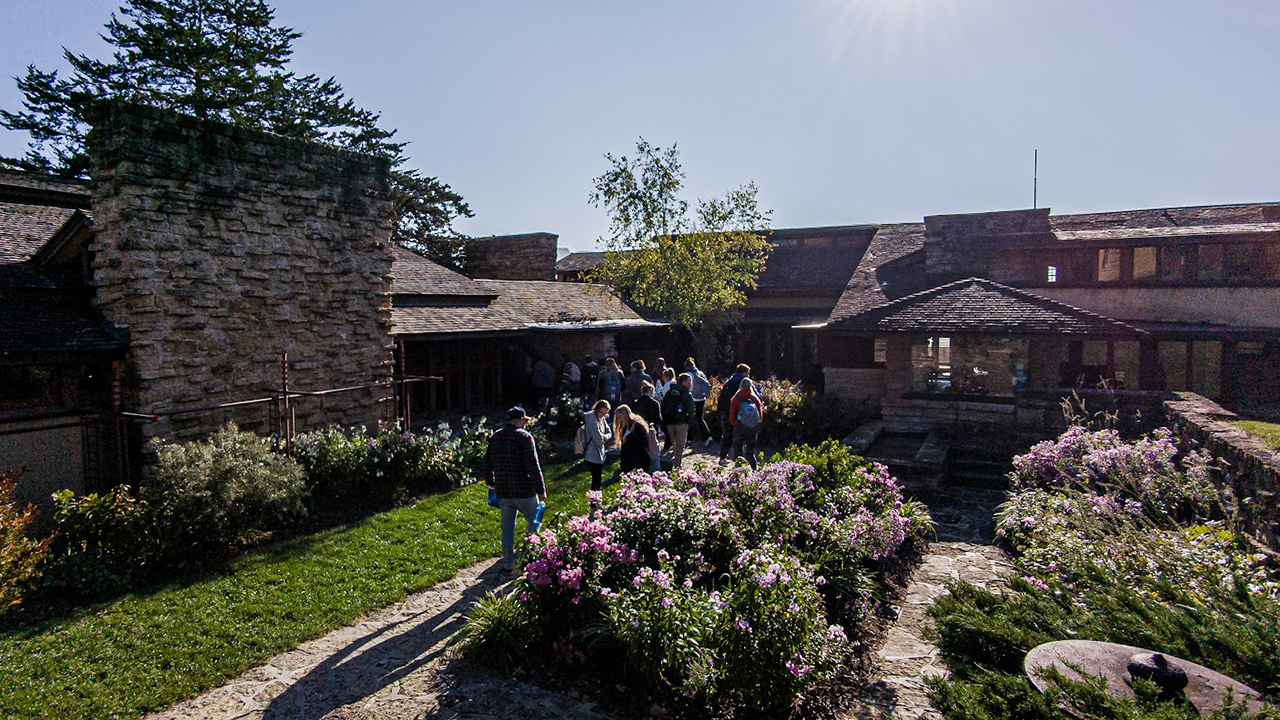
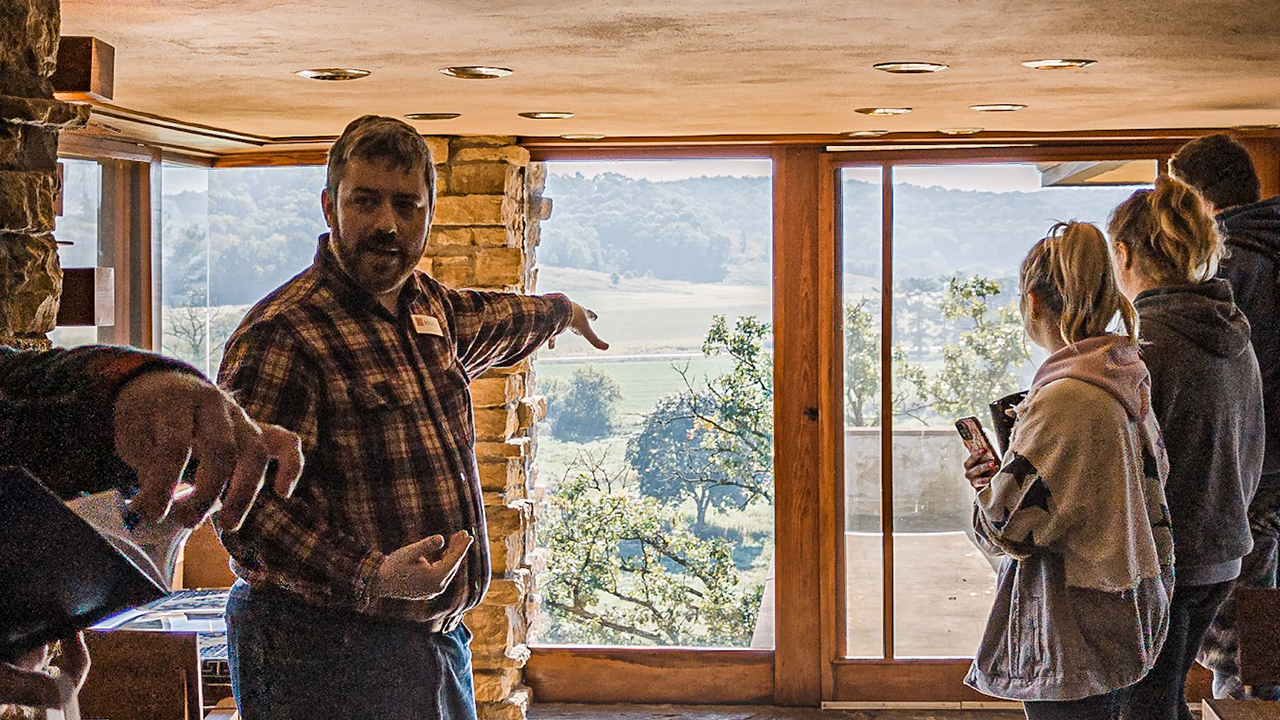
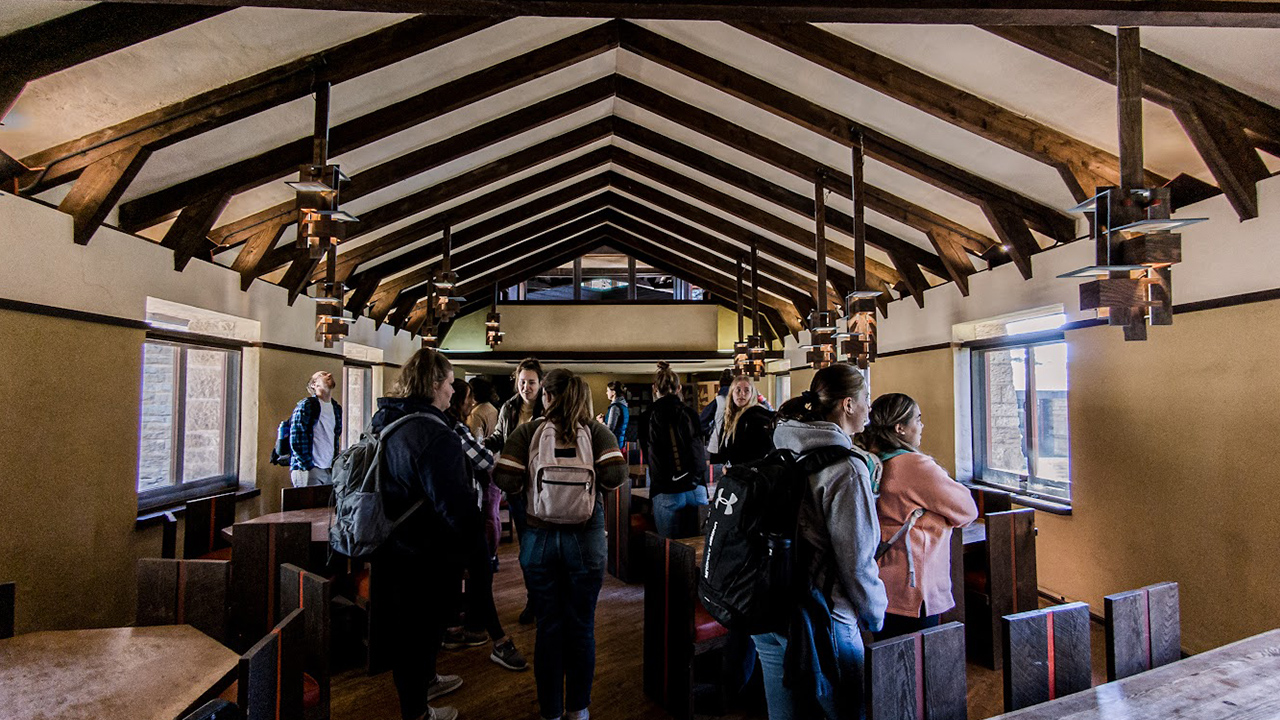
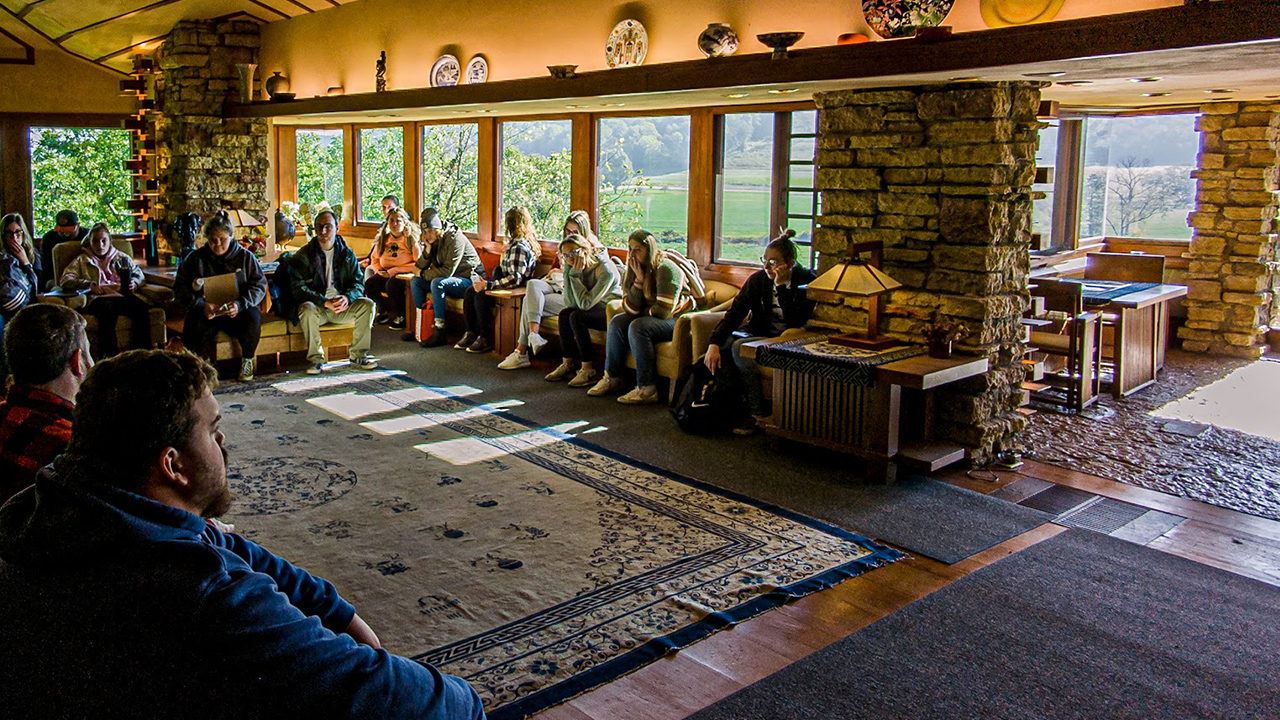
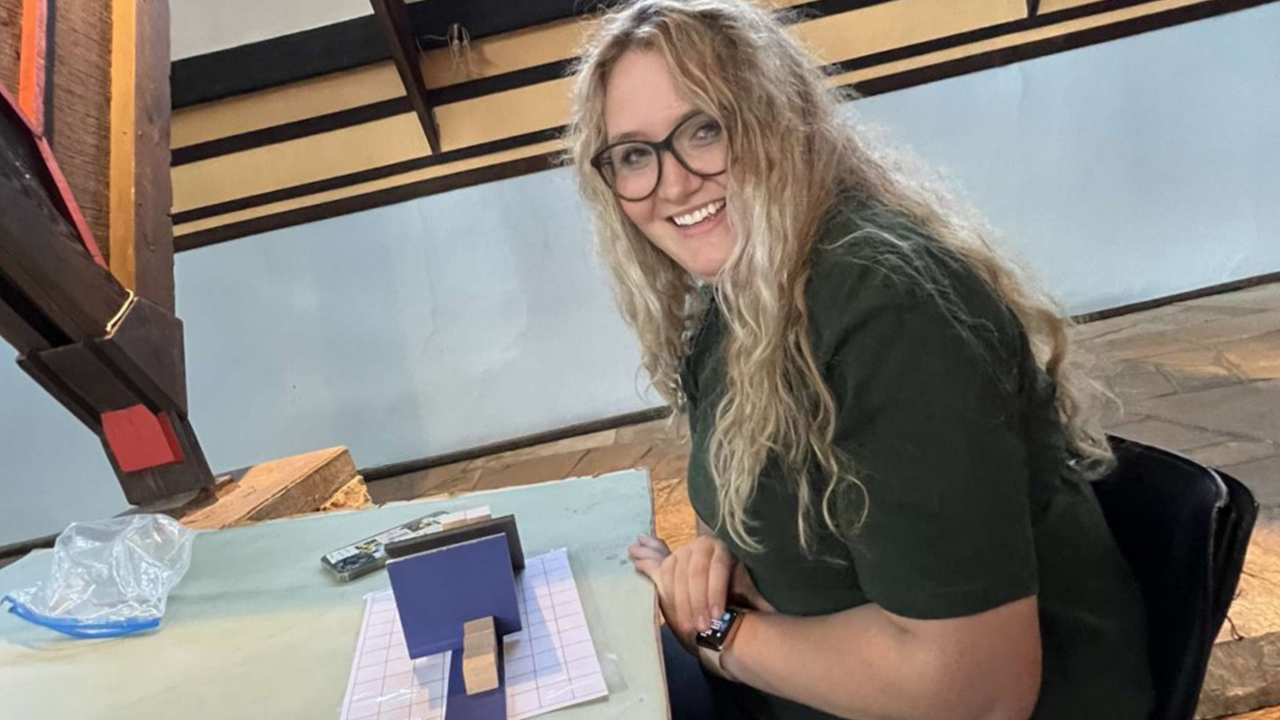
The University of Wisconsin-Platteville School of Education students enrolled in Community Based Learning recently traveled to architect Frank Lloyd Wright’s Taliesin, near Spring Green, Wisconsin, for a tour and lab day. The experience was a lesson in place-based education – a foundational component of UW-Platteville’s School of Education that focuses on using students’ own communities, including the history, culture and environment, as a primary resource for learning.
“The tour and lab day really opened my eyes to how much hands-on experience you can get from the things around you,” said Carly Jacquart, a junior elementary education major from Lake Geneva, Wisconsin. “Working with the community, like we are doing for this class, is an amazing way to gain experience and generate new ideas.”
The students started the day by exploring the visitor center overlooking the Wisconsin River. They then toured the Taliesin main house and drawing lab, where they were able to see the architecture and learn about the different features and rich history of the preservation from informative tour guides who described the features in the home and on the property. Next, they explored the farmland, barn area and the school. Students walked to the Romeo and Juliet tower and learned its history before finishing the day at the theatre and classroom/lab area. After the tour, they had an outdoor lunch where they were able to ask questions, reflect on what they had learned throughout the day and participate in a lab experience where they were given materials to build with in order to see some of the projects that children do there.
“At the end of the day, we got to do an activity to help us understand Wright’s architecture is more than just designing buildings to sit on a piece of land,” said Allison Bradford, a junior elementary education major with a special education minor from Spring Green. “It is about designing the building to fit into the land, because you can change the building, but you can’t change the land.”
Both Jacquart and Bradford agreed that visiting Taliesin was interesting and informative and it allowed them to apply the knowledge they’ve learned in the classroom to the outside world.
“I enjoyed getting the chance to explore the beautiful landscapes and make connections about my education with fellow classmates,” said Bradford. “[The experience] helped me grow my understanding of place-based education. I gained an understanding of Taliesin’s thought process about developing ideas for the classroom and was able to share my ideas. Through this, we were all able to come up with creative ideas to take back to Platteville.”
Part of the goal of the Community Based Learning course is to help young people to find ways to gain experiential learning, connect what they’ve learned and apply it in real life.
“Visiting Taliesin was our students’ chance to draw inspiration and understanding of sites and landmarks in their own backyard and use that in their teaching in order to experience its historical significance and be a part of the larger narrative,” said Dr. Joshua Anderson, assistant professor in the School of Education, who teaches one of the Community Based Learning classes.
Tasked with preparing students for teaching, the School of Education looks for partners in the local community so that their students can apply the principals they’ve learned in the classroom in order to prepare for when they become teachers.
“This is just one of many innovative initiatives that the School of Education is taking in order to make sure our students become successful teachers,” said Dr. Douglas Adams, assistant professor in the School of Education, who also teaches one of the Community Based Learning classes. “This really means something. It’s not just for a grade. We want our students to be the best they can be during this severe teacher shortage.”
Taliesin is Wright’s 37,000-square-foot home, studio, school and 800-acre estate that includes buildings from nearly every decade of his career. Taliesin was designated a National Historic Landmark in 1976 and in 2019 became a UNESCO World Heritage Site.